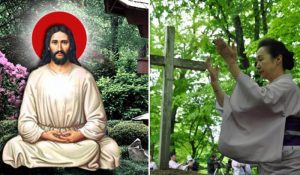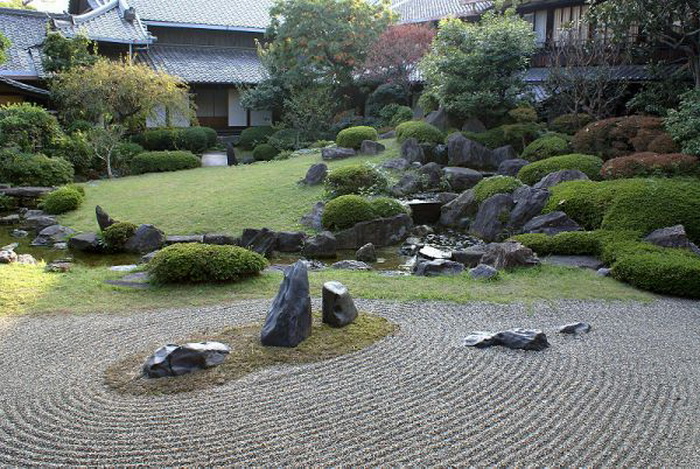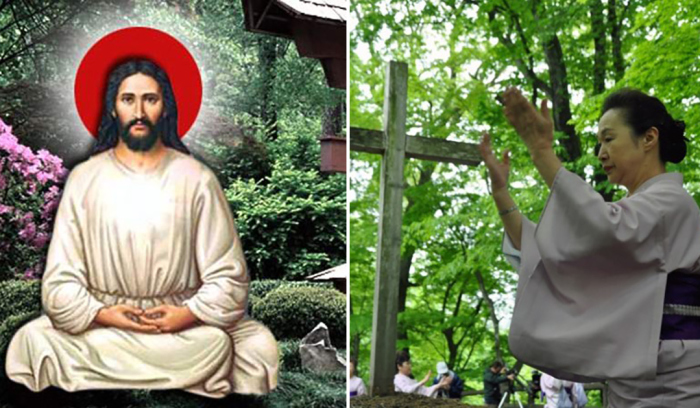Did Jesus really escape execution, get married and live in Japan: Museum in the village of Shingo
 650 km north of Tokyo you can find the tiny village of Shingo, which locals consider the last refuge of Jesus Christ. Allegedly among the quiet hills of this place forgotten by God, the Christian prophet lived like an ordinary farmer, growing garlic. He had three daughters and lived in a Japanese village until 106 years old. All this, as well as many other interesting facts, is described in the local Museum of Jesus. Who knows, maybe today you can run into several of his descendants right on the street …
650 km north of Tokyo you can find the tiny village of Shingo, which locals consider the last refuge of Jesus Christ. Allegedly among the quiet hills of this place forgotten by God, the Christian prophet lived like an ordinary farmer, growing garlic. He had three daughters and lived in a Japanese village until 106 years old. All this, as well as many other interesting facts, is described in the local Museum of Jesus. Who knows, maybe today you can run into several of his descendants right on the street …
Shingo is located in Aomori Prefecture, and its population is about 2500 people. Near the alleged grave of Christ are other popular tourist attractions – a car race track, a stunning pyramid and the so-called “Big Rock”. However, tourists still travel to Shingo primarily to see the place where Jesus lived another 70 years after his alleged execution. All visitors are also surprised that the population of the village, which has nothing to do with Christianity, is so passionate about Christ.
Moreover, the legend of Singo Jesus is not just a trick to attract tourists. Locals sincerely believe in her. The story goes as follows: 21-year-old Jesus went to Japan, where he studied for 12 years with a priest on Mount Fuji. At the age of 33, he returned to his homeland to preach the newfound Eastern wisdom, but the crowd of angry Romans clearly did not appreciate his impulses. However, then the unexpected happened. It is written on a tablet at the Shingo burial site that the younger brother of Jesus, named Isukiri, helped Christ escape, but instead took his place on the cross and was crucified. After that, Jesus, taking with him the memory of his brother’s ear and a lock of his mother’s hair, fled through Siberia to Alaska, and from there he returned to Japan, to the place where he learned wisdom. Today it is believed that in the burial site adjacent to the grave of Jesus in Shingo just these ears with a lock of hair rest (therefore, two graves were made).
In Shingo, Christ was considered a “great man,” although the locals did not know anything about the miracles he performed. Jesus adopted the new name Torai Taro Daitenku and started a family with a woman named Miyuko. The direct descendants of their ancestry founded the Savaguchi clan, which has since been courting the grave, but refuses to conduct exhumation in order to confirm or refute the legend.
A museum was built near the burial site, which provides information and evidence of the village’s claim to the glory of Christ’s last resting place. The museum says that thanks to the appearance of Jesus, the locals began to wear clothes worthy of Jerusalem and carry their children in baskets, like Moses. In the 1970s, residents began to apply charcoal marks on the foreheads of infants. By the way, the Stars of David are found throughout the village, and the words in Hebrew slip in the local dialect.
Locals have always considered the Savaguchi family to be very unusual: many of them had blue eyes, and the clan also owned a strange heirloom: a Mediterranean crush for grapes. However, when asked to talk about their potentially holy 2000-year-old pedigree, the Savaguchi ignore the issue, telling reporters that they “can believe what they like.” In fact, all this does not really matter for the Savaguchi, who, after all, profess the Shinto and Buddhist faiths. However, the local legend of Jesus the immigrant attracts tourists to the region. Every June, people gather for a big celebration near the graves, singing Jewish and Japanese folk songs. This all happens as part of the Bon Festival.
It is unlikely that anyone will say there is at least a tiny fraction of the truth in this legend. But the fact remains that in the New Testament there is a “unaccounted for” 12-year period. Also, once, a real biblical relic confirming the history allegedly existed – Takeuchi scrolls that “surfaced” in the 1930s but then disappeared during World War II. The Museum of Jesus in Shingo now stores records of lost documents, which only the oldest locals remember.
Most historians believe that this legend is simply a loud publicity stunt invented in the 1930s by the mayor of Shingo, Denjiro Sasaki, who at that time “very successfully” made a discovery by finding various ancient pyramids. But instead of sunk after some time, this story is increasingly interwoven with identity




